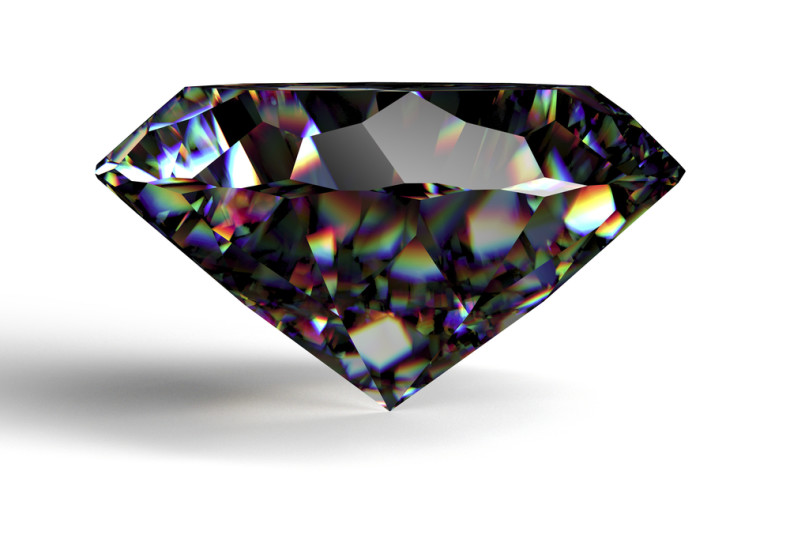 The electronics of the future could be made of a material you leave in your toilet.
The electronics of the future could be made of a material you leave in your toilet.
If you’re up on your electronics of the future, you’ll recall that they were supposed to be made of graphene. Remember graphene? It was supposed to be better than silicon, because it lets electrons go really fast. That’s great, but researchers are still scratching their heads looking for a way to make those fast electrons stop (arguably the more important mechanism in our electronics). But then, last year, researchers discovered that black phosphorous – shaved into a 2-dimensional layer called phosphorene – has both zippy highways and stop lights. Researchers have gotten very excited about this material. It’s been under two years since phosphorene was discovered, but already this paper has been cited in the literature over 400 times. Things are moving fast. Early this year, one of the material’s big remaining problems – the difficulty of making it in bulk – was solved. This wonder material is making fast advances into the real world.
Phosphorus, you say? Isn’t that the stuff that’s in agricultural fertilizer? Why yes, astute reader. You are also correct that unlike silicon, you can’t just grow phosphorous. It has to be dug out of mines, most of which are in China, the Middle East and North Africa. And once it’s dug out, there are many applications ahead of zippy low-power electronics in the phosphorus queue. As you were so quick to point out, it’s one of the big 3 agricultural fertilisers. Phosphorus is crucial for our bones and teeth and the health of our cells. It has no substitute.
Some people fear that we are approaching peak phosphorus: at current production rates, world phosphate production will reach its maximum before 2040, just as an additional 2 billion people need fertiliser to grow their food. Very smart people have debunked the notion of peak phosphorus – as with any resource we need, they say, when it runs low in the easily accessible places we’ll just dig a little deeper for it.
But that’s a setup for a more realistic worry: as the world’s easily accessible supplies are exhausted, a niche opens up for phosphorus cartels to set prices, which could destabilise agriculture and make it unaffordable or unavailable for any other uses. China has already set tariffs on its supply to limit exports.
However, there’s one little loophole that could make all these worries go away. There’s a lot of P in our pee. In fact, that’s how phosphorus was first discovered in the 1600s by a putative alchemist who distilled 1500 gallons of his own urine to find a glowing substance he mistook for the Philosopher’s Stone. Now, the threat of phosphorus insecurity has spurred a lot of people to take a fresh look at urine. That, and the fact that our excretions of it cause a lot of environmental headaches such as massive algal blooms.
The thing is, our modern plumbing and wastewater infrastructure is not great for separating valuables in our urine from the rest of the wastewater – showers, laundry, and whatever else ends up in treatment plants. It just gets too diluted. This explains why early work in reclaiming phosphorus from urine focused on separate collection and treatment. This required special plumbing. The 55 residents of Björsbyn ecological village in Northern Sweden, for example, used urine separation toilets to siphon their wee into special tanks for later dispersal onto nearby farmlands.
Not what you’d call a global, scalable solution.
A lucky break came when researchers started exploring the nasty sludge that blocks up pipes in wastewater treatment plants – and found struvite. Here, phosphorus had basically done them the favour of collecting itself. Thanks to this breakthrough, many cities are now coming online with wastewater phosphorus recovery. For now, it’s mainly going to be used for fertiliser, but some researchers speculate that with better purification techniques, it could also be a source for electronics-grade material.
If you think this is a whole lot of trouble, black phosphorus just might be worth it. It’s not just good for low power electronics. This year scientists used it to make an ammonia sensor and an optical switch. It could help create ultra-high quality space telescopes to spy on all those exoplanets we’ve found. But its best trick might be what it can do when ganged up with other materials. For example, when one group used it to reinforce PVC piping, they got a shockingly strong composite material.
And then, last week it was revealed that in addition to being the only material to show electron transport in 2D, black phosphorus has another trick up its sleeve: its properties change depending on the direction of the material. So for example, IEEE Spectrum reports that “heat flows more easily in a direction in which electricity flows with more difficulty” – which means black phosphorus could be a killer thermoelectric material.
Realistically speaking, this is probably all academic. A lot will have to go wrong before we turn to phosphorus. Graphene will have to be a total bust. Silicon will have to become obsolete, a highly unlikely scenario – silicon has survived all of the reports of its death. Someone will figure out how to keep it at the heart and soul of electronics long after the other contenders are forgotten. But in the unlikely event that we do run out of options? It’s nice to know that we won’t just be pissing in the wind.
One thought on “The dark crystal”
Comments are closed.